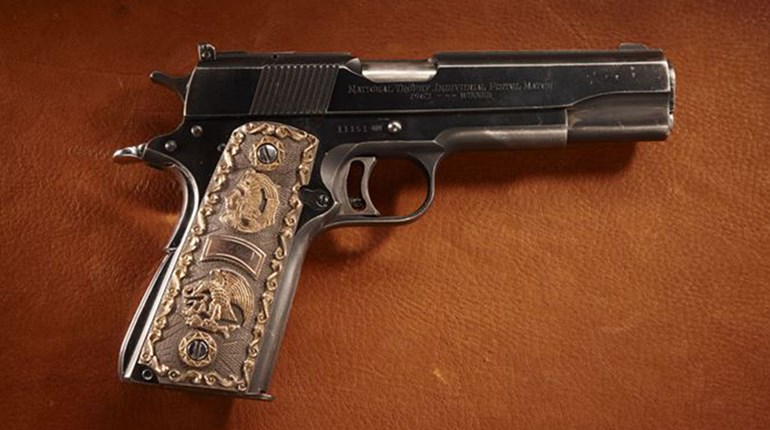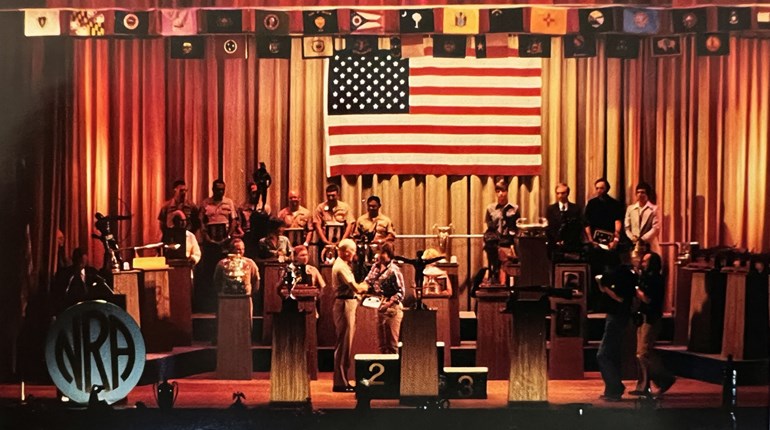It's curious, but nonetheless inarguable, that many different perceptions exist about what NRA's role is, or should be, in regard to hunting. And it's not just disparity in what NRA members think as opposed to non-members, or what hunters vs. non-hunters think or even differences between NRA-member hunters vs. hunters who aren't members. The viewpoints on this are all over the board.
Which is strange, because it's equally inarguable that NRA is America's oldest open-membership organization of hunters and its largest. In surveys, about 75 percent of the membership identify themselves as hunters, which amounts to 3.75 million current members. No wonder that for 42 years, NRA members have made American Hunter the world's largest hunting magazine.
No other hunting group rivals NRA's clout, and for timely affirmation, look no further than November's election results, when NRA-ILA led the charge to pass pro-hunting ballot initiatives in Maine, Alabama and Mississippi. In the last two, voters overwhelmingly approved measures to add "Right to Hunt, Fish and Harvest Wildlife" to state constitutions, thus ensuring wildlife conservation and management decisions will be based on sound science and not the misguided emotions of anti-hunting extremists. That means hunting rights in 20 states now enjoy the strongest legal protections as a result of a long-term NRA campaign.
Even so, with the recent formation of the Hunters' Leadership Forum (HLF) spearheaded by current NRA President Jim Porter, the time has come for your Association to raise awareness among all hunters as to what NRA does to benefit them every day. In its early stages, HLF has assembled a cadre of distinguished high-achievers from diverse backgrounds to chart a course for hunting's future. Included are folks with admirable track records in corporate and political arenas, independent entrepreneurs and educators, doctors and financiers, firearm and hunting industry professionals, communicators and more. All are dedicated to the principle that hunters are the world's greatest conservationists, and that America's hunting heritage remains vitally important to our national character. Understanding that leaders must have resources, HLF members are well on their way to funding a $10 million Hunters Leadership Endowment.
Inspiration for the HLF movement is coming from many sources, one of which is NRA's historic connection to hunters. While it's well-known that the Association's founding purpose was to promote civilian rifle practice, an outreach to hunters is present in publications aligned with NRA during those early years. The Rifle (1885-88), Shooting and Fishing (1888-1906) and Arms and the Man (1906-1923) all featured hunting articles and pushed for wildlife management, game laws and the sportsman ethic.
One pivotal figure from this formative period was James A. Drain, former Adjutant General of the Washington National Guard who was both an avid rifle marksman and an outdoorsman. Following a stint on the executive committee, Drain was elected NRA president in 1908. However, his most lasting impact stemmed from his tenure as owner and editor in chief of NRA's affiliate magazine, which he renamed Arms and the Man in late 1906. The new title recast itself as an organ for military affairs, especially service arms, training and competition. Coverage of club, college and schoolboy shooting continued undiminished, and technical reports on firearm and ammo performance kept readers informed about developments in the emerging smokeless-powder era. During his term as NRA president, Drain moved Association operations and its publication from New York to Washington, citing the need for greater political clout in order to further NRA's objectives.
Along with those changes, Drain kept the spotlight on hunting with cover art of game and field scenes, to go with high-profile adventure pieces and hands-on accounts of new sporting guns and gear. There was regular coverage of Theodore Roosevelt, including news in March 1907 that the sitting president had become an NRA Life member, followed by a lengthy exclusive from a presidential bear hunt in Louisiana. For hunting articles, Drain employed top writers, like E.C. Crosman, Townsend Whelen and novelist Stewart Edward White, whose detailed "How My Guns Performed in Africa," published in the June 1, 1911, edition, was one of the first safari accounts penned by an American. Advertising sales spiked in this time frame, much of it directed toward hunters.
Drain's final contribution may have been his greatest, when he transferred ownership of the revenue-producing magazine to NRA for $1 in 1916, shortly prior to serving as a staff officer in World War I.
 After the magazine was again relaunched in 1923 as The American Rifleman, hunting material was a standard editorial component for the next half century, fronted by covers regularly devoted to animals and hunters afield. Reports kept readers informed of NRA support for important milestones like the 1930s legislation that created wildlife restoration (Pittman-Robertson) trust funds and the post-World War II movement to make hunting safer. In 1949, NRA worked with the state of New York to create the first hunter safety course, which evolved into today's state hunter education classes. With the advent of American Hunter as a membership benefit magazine in the 1970s, NRA proclaimed, "We are hunters. Hunters are NRA."
After the magazine was again relaunched in 1923 as The American Rifleman, hunting material was a standard editorial component for the next half century, fronted by covers regularly devoted to animals and hunters afield. Reports kept readers informed of NRA support for important milestones like the 1930s legislation that created wildlife restoration (Pittman-Robertson) trust funds and the post-World War II movement to make hunting safer. In 1949, NRA worked with the state of New York to create the first hunter safety course, which evolved into today's state hunter education classes. With the advent of American Hunter as a membership benefit magazine in the 1970s, NRA proclaimed, "We are hunters. Hunters are NRA."
While all that may seem intuitive in hindsight, that wasn't necessarily the case in an organization founded for the compelling, if narrowly defined, cause of maintaining a trained citizen militia ready to contribute to national defense. By exerting leadership early, NRA helped to ensure that U.S. hunting would be open to everyone, a principle backed by the designation of millions of acres as public hunting lands. Millions of hunter-members came on board and were instrumental in the subsequent growth and influence of NRA.
More take-charge leadership will be sorely needed in a century where hunting faces unprecedented challenges. Hiding behind online anonymity, animal-rights wackos slander hunters and stoop to terroristic death threats in efforts to poison public opinion against an endeavor sanctioned by each of the 50 states, which generates considerable economic clout and which remains highly esteemed in many American communities. Big media profits on popular TV shows that reveal the inherent decentness of hunting families, yet many cynical influencers hammer away with empty-headed slurs seeking to depict us as inferiors. Access to hunting land is a real obstacle for many, and a tough nut that demands creative solutions. Even so, the problem is aggravated by some federal and state agencies clinging to a preservationist mindset, which blocks resources from users and allows treasured public wildlands to become unproductive. Claims of budget shortfalls are rampant, yet hunters and shooters are pumping more money per capita into the system than ever before. Hunters are fighting the good fight and thwarting the worst, but let's all be aware that our opposition never sleeps, that challenges lie ahead. We need a powerful advocate. We need a watchdog that can jump up and bite hard. This is how HLF can make a huge difference for all of us determined to preserve hunting in America.
If anyone can do this, it's NRA. Against tremendous opposition and odds, NRA—leaders, staff, members and supporters working together—continues to win battles for our firearm freedoms. What's more, there's evidence that the American public increasingly agrees, and not just in principle: Literally, millions of newcomers have exercised their firearm rights in recent years. Over the past 40 years NRA has developed a political savvy unmatched in present society. We will need this same combination of leadership, collective will and political effectiveness to win the culture war over hunting. The NRA Hunters' Leadership Forum is the right vehicle at the right time to ensure our success.




































